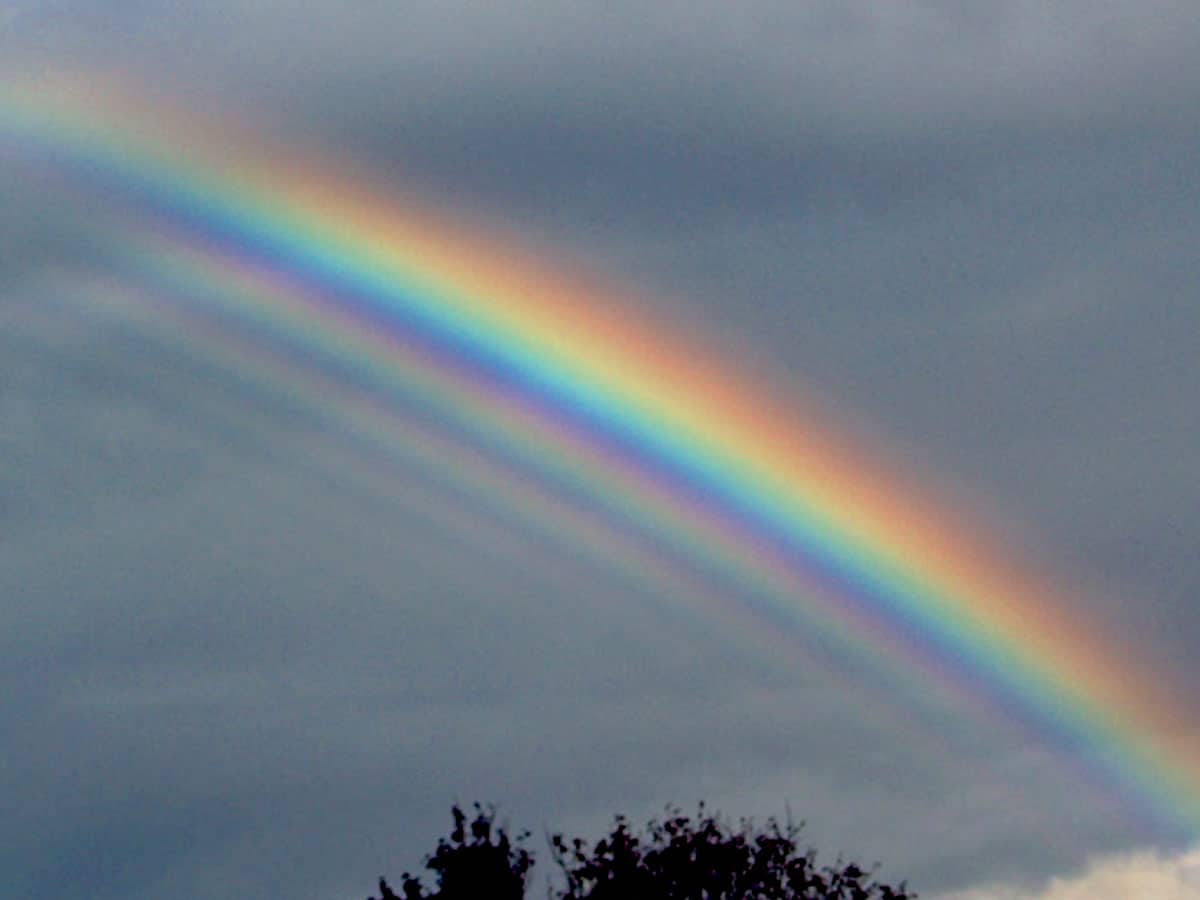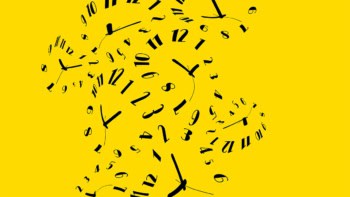In physics, asking the question “Is it real?” is a slippery slope, and the answer often depends on the level at which something is modelled. In this article (originally published in Lateral Thoughts, Physics World’s regular column of humorous and offbeat essays, puzzles, crosswords, quizzes and comics, which appears on the back page of the print edition) Michael Berry explores the depths of our perceptions

Reading Christopher Pinney’s 2018 book The Waterless Sea: a Curious History of Mirages, I was struck by a phrase he used to describe mirages, and indeed all illusions: “real, but not true”. There is no watery mirror reflecting light above a hot road, no fairy castle hovering above the polar horizon, no doppelgänger of you behind the mirror, no little people inside your TV. These interpretations are false, but our perceptions are real.
It occurs to me that with physics it’s the opposite. We compare our theories with observation or experiment, and if they agree (albeit sometimes tentatively), we justifiably declare that the physics is true. But the question “Is it real?” is a slippery one. Possible answers depend on the level at which something is modelled.
Consider this simple question: “How do your glasses work?” There are at least four answers, corresponding to the hierarchy of concepts with which we understand light. The first describes the rays from whatever you are looking at: how the lens deflects the rays to form the focused image we perceive. The second describes the focus in terms of the coherent interference of light waves. The third considers the electric and magnetic fields, propagating according to Maxwell’s equations. The fourth is in terms of the photons: the quantum excitations of the modes corresponding to the Maxwell fields.
Which answer explains what is “really” happening? None of them. Each is useful to us at a different level and for different reasons. Each gives a quantitatively accurate account of some of the phenomena, so it is true – but it fails for others. The ray explanation is the most immediate – lens designers still use ray-tracing algorithms (now sophisticated and computer-based) to compensate for astigmatism and optimize our varifocals. But to understand how diffraction blurs the focus of a lens it is necessary to consider the underlying waves. Even this is insufficient to understand the intricate polarization structure of the electromagnetic vector fields near a focus. And the quantum level? I doubt this has any application in designing lenses or understanding how they work, but it does connect our glasses with the vast world of quantum phenomena in nature and technology. Each deeper level explains more but takes us further from direct connection with the original phenomenon.
When I look at a rainbow, I see beyond the Descartes–Newton ray explanation
When I look at a rainbow, I see beyond the Descartes–Newton ray explanation in terms of refraction, reflection and dispersion of sunlight encountering raindrops. I look for the supernumerary bows: interference fringes that allow us to see, vastly magnified, the inadequacy of the ray theory of light and its replacement by the physics of waves. And, behind the waves, I see how Airy’s and Stokes’s contemplation of this kind of interference led to fundamental insights into the mathematics of divergent series, which is now being further developed by the quantum field theorists, who find they need it.
When I look through a sheet of Polaroid and rotate it, the rainbow acquires a dark region that moves, revealing the transverse (vector) nature of light: its polarization. And at night, when I see a (rare) moon rainbow, it appears white, because in dim light it is the colour-blind rods in my eye, whose quantum excitations enable the effects of the light to reach our brains, that dominate the colour-sensitive cones.
None of these levels describes the real rainbow. We physicists might be tempted to claim that the quantum level is real because it underlies the others: the earlier levels are mere approximations, often based on entities (rays of light, for example) that are non-existent in the deeper physics. This should be resisted, for two reasons. First, because it would make reality history-dependent; that is, based on whatever physics we currently regard as the most fundamental. And second, because using the term “real” in ways so remote from the perceived phenomenon is discordant with common-language usage.
This “true, but not real” way of thinking applies more widely. It is common-language usage to say that my solid kitchen table is a real thing. But look closely and its distinctive shape dissolves into an arrangement of atoms in the molecules of the wood. Closer still, and the solidity dissolves into empty space. The whizzing electrons, when detected as particles, have no size yet determined, and the impenetrability of matter is revealed as a consequence of quantum identicalness, in the form of the Pauli exclusion principle – itself a consequence of the relation between the spins of quantum particles and their behaviour under exchange. Zooming further, we encounter the nuclei, with their protons and neutrons, and finally, perhaps, their quarks. Ever deeper, and all true, but where has the table gone?
Straying into matters discussed at length by philosophers (especially in the more restricted context of quantum mechanics), I am uncomfortably aware of being an amateur, vulnerable to being dismissed by professionals as Duke Ellington dismissed some jazz critics: “Too much talk stinks up the place.” Nevertheless, I find “real/true but not true/real” surprisingly pregnant with perspectives and sidelights on what we physicists do.
Descartes taught us that rainbows are illusions: there are no coloured arcs in the sky. Each raindrop emits light focused into a bright cone, and we, looking up, see, brightly lit, only those droplets whose light-cones intersect our eyes. Each person – and each of their eyes (as I noticed in the sunlit Victoria Falls many years ago) – sees a different rainbow. So, although rainbow physics is true, but not real, the rainbow we see is real, but not true.



